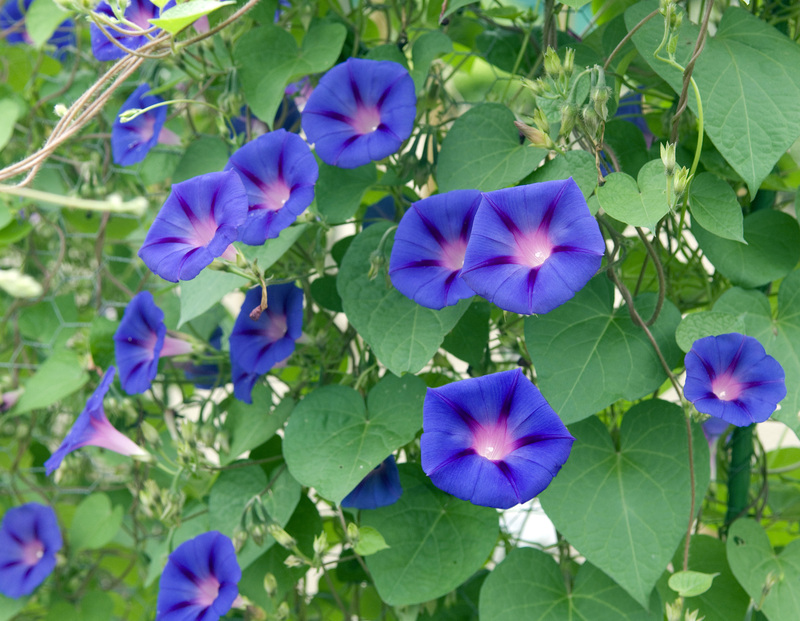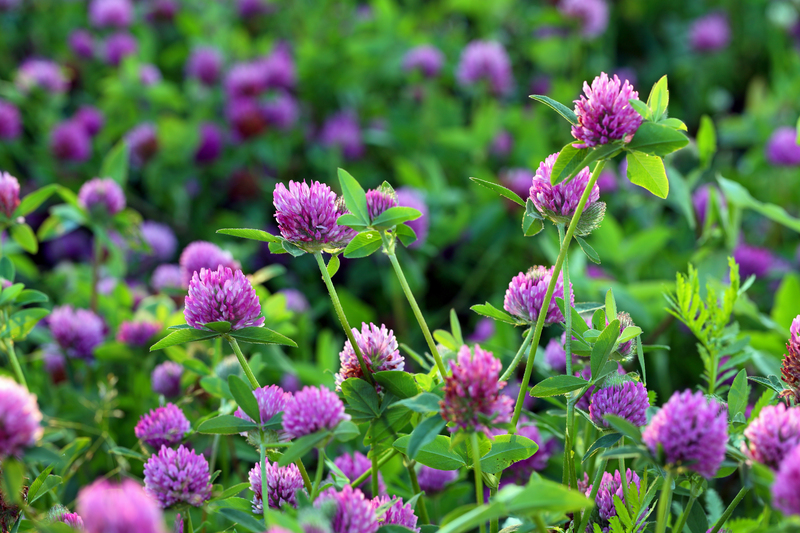Rethink Shady Spots with the Charm of Evergreen Climbers
Posted on 16/05/2025
Rethink Shady Spots with the Charm of Evergreen Climbers
Do you sigh at the sight of those dull, overlooked corners in your garden where the sun rarely graces with its warmth? If so, it's time to reimagine your shady spaces with the magical allure of evergreen climbing plants. These resilient, lush plants can transform the darkest nooks into thriving, enchanting retreats--adding depth, color, and year-round interest to every outdoor setting.
In this comprehensive guide, discover why evergreen climbers for shade are a true garden secret weapon, explore the best varieties, learn essential care tips, and find creative ways to incorporate them into your landscape design. Let's unveil how to make your shaded garden spaces burst with character and life!
Why Choose Evergreen Climbers for Shaded Areas?
Shaded zones in gardens often pose a challenge for plant enthusiasts. Grass weakens, flowers do not bloom, and many shrubs fail to thrive in these low-light environments. However, evergreen climbing plants bring solutions that are both practical and aesthetically pleasing. Here's why these versatile plants are invaluable in shady landscapes:
- Year-round Foliage: Unlike deciduous varieties, evergreen climbers retain their lush leaves throughout all seasons. This ensures your garden never looks barren--even in winter months.
- Clever Cover: Evergreen climbers can swiftly cover unattractive fences, walls, or sheds, turning them into organic green backdrops and enhancing the entire visual appeal of your outdoor space.
- Biodiversity Boost: These plants provide nesting sites and shelter for birds and beneficial insects, making them a boon for local wildlife--especially when little else is growing.
- Low Maintenance: Many evergreen vines for shade need minimal care once established, allowing hassle-free enjoyment for years.
- Versatile Growth: Whether you have walls, arches, pergolas, or trellises, shade-loving evergreen climbers offer adaptability for a range of vertical garden solutions.

Understanding Shade: What Does 'Shady' Really Mean for Gardens?
Before selecting the best climbing evergreens for shade, it's important to know the kind of shade your space receives. Here's a quick breakdown:
- Light Shade: Areas that receive indirect sunlight for a few hours per day. Can support a wide range of climbers.
- Partial Shade: Spots with about 3-6 hours of sunlight daily--ideal for most shade-loving evergreen climbers.
- Deep Shade: Locations with very little to no direct sunlight, often beneath dense trees or against north-facing walls. Special evergreen species thrive here.
Identifying your garden's unique light conditions helps you choose the right climber for best results.
Top Evergreen Climbers That Thrive in the Shade
Let's explore the most charming evergreen climbing plants perfectly suited to shaded spots:
1. English Ivy (Hedera helix)
- Type of Shade: Grows in full or partial shade
- Growth: Rapid, self-clinging
- Features: Dense coverage, attractive variegated leaves, can be carefully pruned into shapes
English Ivy is perhaps the quintessential choice for low-light walls. Its robust nature and ability to tolerate pollution make it ideal for urban shady gardens.
2. Japanese Climbing Hydrangea (Hydrangea anomala subsp. petiolaris)
- Type of Shade: Partial or dappled shade
- Growth: Slow to moderate, with aerial roots
- Features: Broad, glossy evergreen leaves and clusters of white lacecap flowers in summer
This climber creates an elegant tapestry of deep green throughout winter and showers of delicate blooms come summer, even in shadier corners.
3. Star Jasmine (Trachelospermum jasminoides)
- Type of Shade: Partial shade
- Growth: Twining, moderate rate
- Features: Fragrant white flowers, glossy evergreen foliage, suited to sheltered shaded areas
Star Jasmine brings unmatched fragrance and sophisticated foliage to shaded spots--ideal for patios or archways
4. Climbing Euonymus (Euonymus fortunei)
- Type of Shade: Tolerates deep shade
- Growth: Vigorous, climbing or ground cover
- Features: Small, evergreen leaves--many cultivars boast yellow or white variegation
Resilient and adaptable, climbing euonymus adds colorful foliage patterns to even the shadiest corners, both vertically and as ground cover.
5. Chilean Potato Vine (Solanum crispum 'Glasnevin')
- Type of Shade: Partial shade
- Growth: Fast, twining stems
- Features: Evergreen leaves and violet-blue flowers from mid-summer to autumn
Despite its unusual name, this climber offers subtle beauty and vibrant color with minimal fuss in sheltered, shaded spots.
6. Clematis armandii
- Type of Shade: Light to partial shade
- Growth: Vigorous
- Features: Glossy, long evergreen leaves and clusters of scented white flowers in spring
This climbing evergreen is perfect for trellises, fences, or growing through trees, bringing springtime fragrance and lushness to areas others neglect.
Innovative Ways to Use Evergreen Climbers in Shady Gardens
Evergreen climbers don't just fill gaps--they can completely reinvent a shaded space. Here are some designer-approved ideas to transform your garden:
- Vertical Green Walls: Train climbers up walls or tall structures to create living screens that soften hardscapes and introduce privacy.
- Secret Nooks: Drape arbors, pergolas, or entrances with fragrant, leafy climbers to carve out secluded seating areas or hidden reading spots.
- Shade Tunnels: Encourage climbers over pathway arches for a magical woodland stroll--even where sunlight struggles to reach.
- Tree Companions: Let climbers twine up sturdy shade trees, bringing a lush, layered canopy effect.
With a little imagination, shady areas can become the most captivating features of your landscape.
Planting and Caring for Evergreen Climbers in Shady Spots
While evergreen climbing plants for shade are generally low-maintenance, their success depends on a strong start. Follow these expert-backed tips for best results:
1. Soil Preparation
- Enrich the soil: Use well-rotted compost or organic matter in planting holes to give roots a healthy foundation.
- Ensure good drainage: Even in shade, waterlogged roots can cause problems. Amend clay soils as needed.
2. Proper Planting
- Depth matters: When planting near a wall, angle the root ball outward so roots spread away from the competition.
- Spacing: Provide ample room for air circulation between plants to minimize fungal issues common in shade.
3. Watering & Feeding
- Initial years: Water regularly until plants are established, especially in dry shade beneath dense overhead canopies.
- Mulch annually: Feed with slow-release fertilizer and mulch to sustain moisture and nutrients.
4. Pruning & Training
- Guide growth: Tie in shoots while young to encourage coverage of your chosen surface.
- Maintain shape: Prune annually after flowering or to remove damaged growth for a tidy, healthy display year-round.
The Environmental Benefits of Evergreen Climbers in Shade
Evergreen climbers do more than beautify--they're ecological multitaskers. Here's how:
- Thermal Insulation: Vertical coverage can cool building walls during summer and insulate them in winter, lowering energy costs.
- Air Quality: Leaves filter airborne pollutants, dust, and carbon dioxide--especially important in urban, shaded settings.
- Erosion Prevention: Root systems stabilize soil and reduce compaction beneath shade trees.
- Wildlife Support: Evergreens offer year-round refuge and food for birds and pollinators even where other plants fail to grow.
Common Problems and Solutions for Evergreen Climbers in Shade
No plant is without occasional challenges. Consider the following issues and their simple remedies:
- Poor Growth: This could be caused by dry, poor soil. Amend soil with compost and check watering schedules.
- Leaf Yellowing: May result from nutrient deficiency or overwatering. Feed with balanced fertilizer and improve drainage.
- Pests: Common pests like aphids or scale can be controlled through regular inspection and organic insecticidal soap.
- Disease: Fungal spots or mildew may occur if air circulation is poor. Prune regularly and avoid excessive overhead watering.

FAQs: Rethinking Shady Spaces with Evergreen Climbers
Can evergreen climbers grow on north-facing walls?
Absolutely! North-facing walls receive little direct sun, but many shade-tolerant evergreen climbers like ivy and euonymus flourish there. Ensure climbing support and enriching soil for the best results.
How fast do evergreen climbers grow in shade?
Growth rates vary. English ivy and euonymus are known for rapid coverage, while star jasmine and hydrangea may take more time to establish, but reward patience with lush, healthy growth.
Do evergreen climbers need support structures in shade?
Most will climb best with guidance--trellises, wires, or netting. Self-clinging types like ivy attach themselves, while twining varieties benefit from something to wrap around.
Are evergreen climbing plants safe for pets?
Check specific varieties: English ivy, for example, is toxic to pets if ingested, while climbing hydrangea and star jasmine are generally safer. Always keep an eye on curious pets in freshly planted areas.
Conclusion: Give Shady Corners a Makeover with Evergreen Climbers
It's time to embrace those overlooked, shady spots in your garden and turn them into enchanting green sanctuaries. With an abundance of evergreen climbing choices for shade, you can create vertical interest, boost year-round color, and invite wildlife into even the darkest corners. From elegant star jasmine and robust English ivy to unique climbing hydrangea, these plants offer solutions both practical and beautiful.
Plant with care, nourish your climbers, and enjoy the captivating charm evergreen foliage brings 365 days a year. Rethink your shady spaces--let evergreen climbers lead the transformation!

